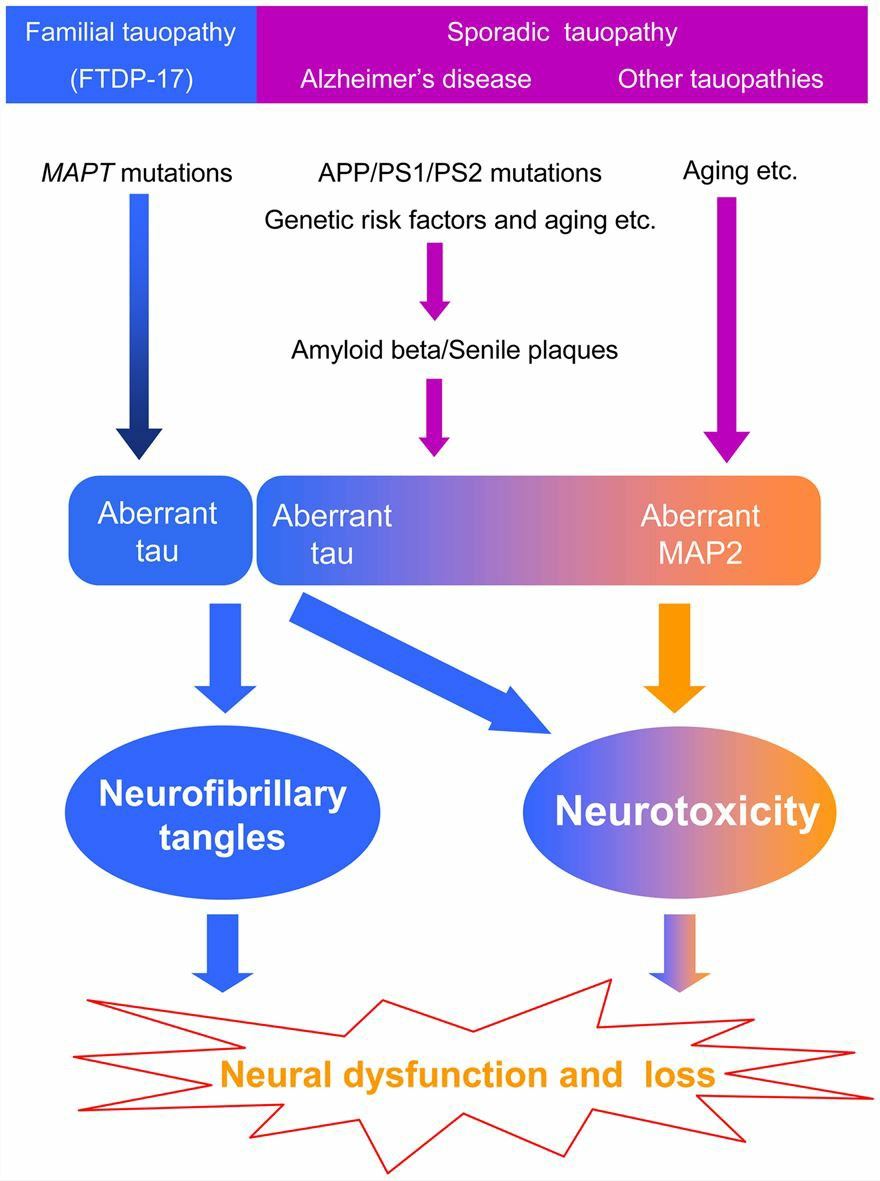MAP2 and Associated Diseases
Creative Biolabs offers experience, depth, breadth, and innovative customized solutions and advanced technology platforms to support researchers in accelerating preclinical research. Our global team of scientists, information analysts, and customer support make this mission possible.
Backgrounds of MAP2
Tau and MAP2 are two of the major and most studied microtubule-associated proteins of the vertebrate nervous system. Microtubule-associated protein MAP2 is a significant large-size component of purified brain microtubules and, like 36-38 Kilton tau, has an antigenic determinant associated with neurofibrillary tangles in Alzheimer's disease. MAP2 is a heat-stable protein and can be resolved in sodium dodecyl sulfate (SDS) polyacrylamide gels into a pair of closely migrating polypeptides (-280 kD) called MAP-2a and MAP-2b. Mammalian MAP2 is mainly expressed in neurons, but immunoreactivity of MAP2 has also been detected in some non-neuronal cells such as oligodendrocytes. MAP2 is very abundant in the CNS tissues of mammals. The multiple human MAP2 isoforms expressed in neurons result from the alternative splicing of an mRNA transcribed from a single gene located in chromosome 2. Loss of MAP2 expression is usually associated with changes in dendrite morphology. MAP2 appears to be critical for neurite extension and branching and cessation of cell division, important processes in the maturation of neurons.
Functions of MAP2
MAP2 belongs to the heat-stable MAP2 family, which is involved in neuronal morphogenesis, maintenance of cell structure and internal organization, cell division, and cellular processes. MAP2 can interact with microtubules through its microtubule-binding domain to regulate neurite growth, microtubule dynamics, and organelle transport in axons and dendrites. They are also involved in the formation of crosslinks between microtubules and nerve filaments. MAP-2 may be involved in the neuropathological process of Alzheimer’s disease.
MAP2 and Associated Diseases
Dysfunction of the MAP2/tau family leads to disruption of microtubule structure and impairment of axonal transport and eventually triggers apoptosis in neurons, which becomes an essential pathway for a prion to induce neuropathology. Calpain-dependent degradation of MAP2 is known as an early response to traumatic, focal ischemic brain injuries and glutamate excitotoxicity. In some animal models, MAP2 levels are typically reduced in ischemia-induced neurodegeneration and Alzheimer's disease. An association between increased MAP2 expression and dendrite pathology in Down’s syndrome has also been established. The overexpression of MAP2 and NF-H may be a mechanism that promotes virus transmission.
 Fig.1 The hypothesis is of the potential involvement of MAP2 in the pathogenesis of tauopathy. (Xie, 2016)
Fig.1 The hypothesis is of the potential involvement of MAP2 in the pathogenesis of tauopathy. (Xie, 2016)
Creative Biolabs aims to continue to be a market-leading global CRO, providing researchers with a complete drug discovery solution to accelerate the discovery of candidate molecules that will eventually be used to treat and cure disease. We will achieve this through scientific excellence, quality of data, honest work, and the most comprehensive technology portfolio in the industry. If you are working in the field of gene therapy, please feel free to contact us today. Our experts will discuss your project needs with you enthusiastically, and we may establish cooperation to move your project forward faster.
Reference
- Xie, C.; Miyasaka, T. The role of the carboxyl-terminal sequence of tau and MAP2 in the pathogenesis of dementia. Frontiers in molecular neuroscience. 2016, 9: 158. Distributed under Open Access license CC BY 4.0, without modification.
